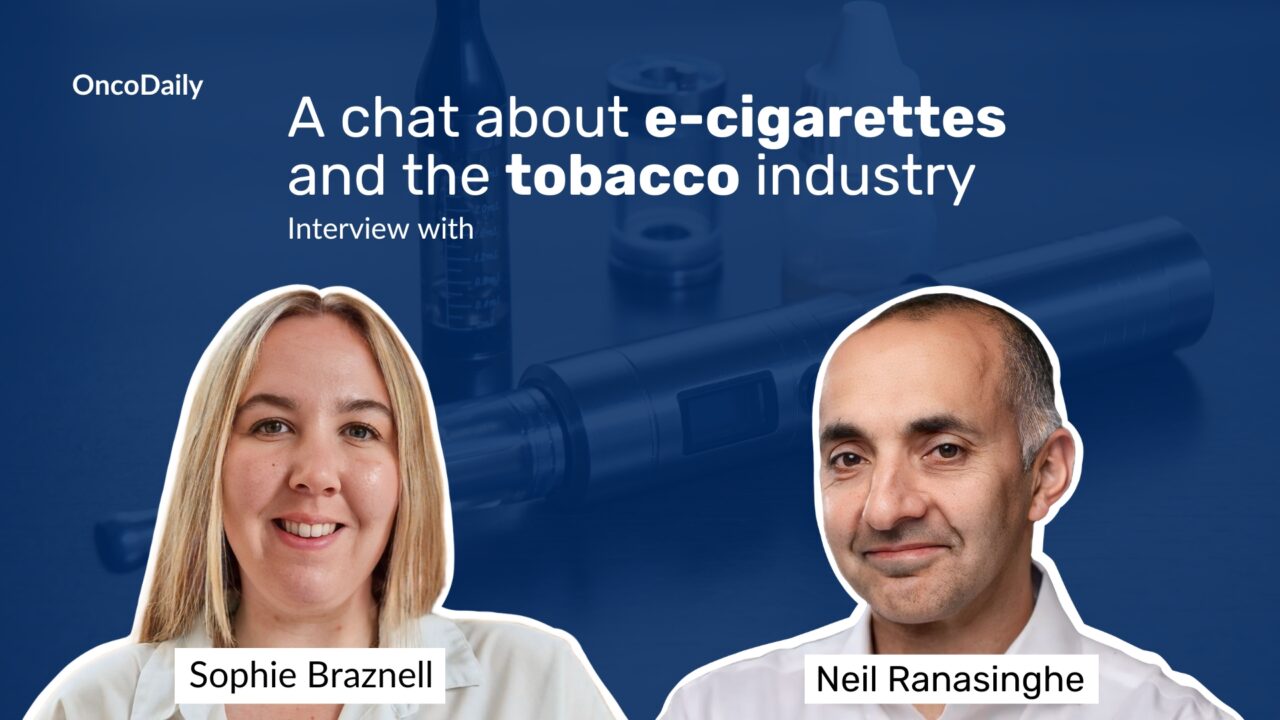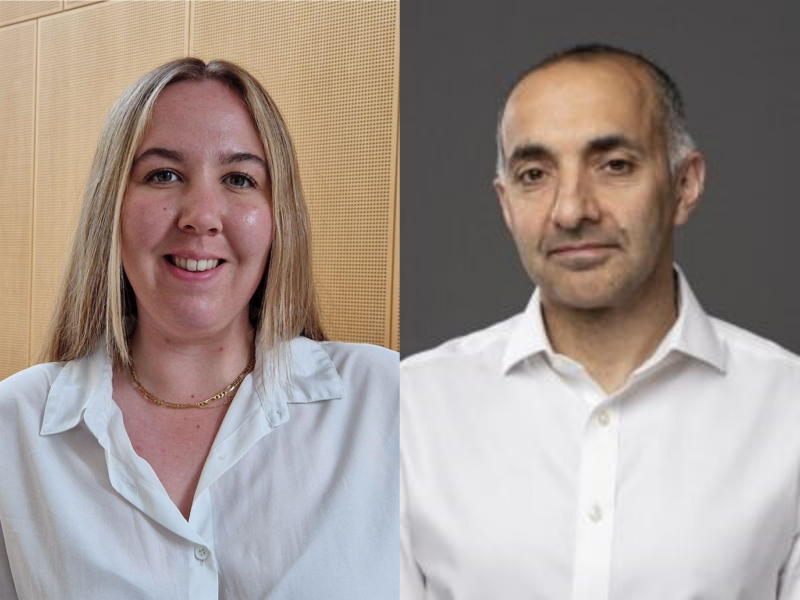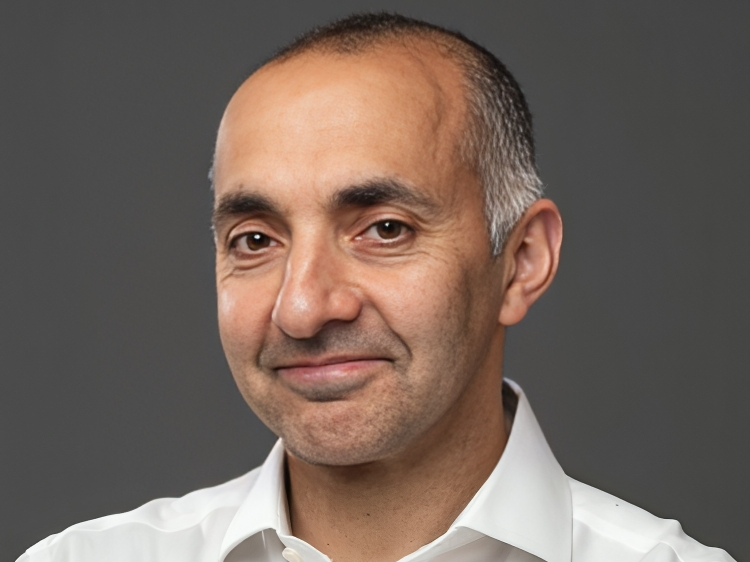
A chat about e-cigarettes and the tobacco industry with Dr Sophie Braznell and Neil Ranasinghe
In this episode of OncoDaily Articles, Neil Ranasinghe speaks to Dr. Sophie Braznell, Research Associate at the Tobacco Control Research Group (TCRG) at the University of Bath, England, about the use of tobacco and e-cigarettes, highlighting the health risks and the behavior of tobacco industries.

Neil:I first came across the TCRG at London Global Cancer Week in 2023. I have also been involved in lobbying for more legislation regarding the sale and packaging of cigarettes in the UK.
This article might look we are against people that smoke or use e-cigarettes, this isn’t the case, we are just trying to highlight the behavior of the tobacco industry, and the health risks. Many of the companies manufacturing and selling e-cigarettes and vapes, are also manufacturing and selling cigarettes.
Please can you tell me a bit about yourself, Sophie.
Sophie: I’m Dr Sophie Braznell. I previously studied human biology and forensic science, and worked in the public sector. I started at TCRG as a PhD student, studying tobacco industry approaches to harm reduction science and whether these approaches help or hinder public health. That’s where the scope of my work has gone since.
Having finished my PhD, I’m still in the Tobacco Control Research Group working as a research coordinator, but also continuing my research into the tobacco industry, and the science behind it, particularly on newer products.
Neil: The audience of OncoDaily is global including many from low-income countries, and also there is a sizeable pediatric oncology community. I know that Tobacco Control Research Group (TCGR) is UK based but with a global view, so I am very interested to hear the issues that are being faced and addressed across the world regarding tobacco control.
Sophie: For a long time the UK has been one of the leaders in bringing in tobacco control. Many countries look closely at what the UK is doing. This is why it is so important that the UK’s policies are based on science rather than what the tobacco industry want.
We’ve had a lot of interest from places including Vietnam, Taiwan and Brazil, where I’ve given presentations, and they have specifically asked about the situation in the UK regarding newer nicotine and tobacco products, like e-cigarettes, heated tobacco and nicotine pouches.
The tobacco industry will often promote three case studies in countries where they’re trying to get their newer products on the market, especially low- and middle-income countries.
They’ll say to the government something like “Look at the UK, they have e-cigarettes on the market, the smoking rates are declining, people are using e-cigarettes to quit smoking and therefore you should do the same.”
When it comes to heated tobacco products, they cite Japan, claiming the declining smoking rates and smoking-related hospitalizations are the result of their heated tobacco products, which are as popular in Japan as e-cigarettes are here in the UK.
When trying to lobby governments to allow nicotine pouches on the market, their argument is “Look at Sweden, they have had snus and nicotine pouches for years and they’ve got the biggest decline in smoking rates anywhere in the world. And it’s all because of our pouches.” However evidence shows us tobacco control measures implemented over the last couple decades have been more powerful in reducing the rates of smoking than any singular product has been.
The tobacco industry uses these three countries (UK, Sweden, Japan) to lobby governments in other countries. We often get requests from those countries being targeted by the tobacco industry, asking us to talk about the true impact of e-cigarettes in the UK, heated tobacco in Japan, or pouches in Sweden.
Neil: On the face of it, they are convincing and compelling arguments.
Sophie: The issue with the industry’s argument on all these products, is this notion of harm reduction – the idea that it’s hard to eradicate an addictive product, but you can reduce overall harm across a population by getting users to switch to less harmful alternatives. However, the harm reduction potential of newer nicotine and tobacco products, like e-cigarettes, is contested. Even if these products are less harmful than cigarettes and can help people quit smoking, net harm reduction won’t happen unless only current smokers switch to them.
Yet, in the UK, Japan Sweden, and other countries where these products are available, that’s not the case. Take heated tobacco products: they are not helping people quit. Most people that use them continue to smoke cigarettes, therefore perpetuating the addiction to tobacco for longer.
Moreover, e-cigarettes, heated tobacco products and nicotine pouches are all being used by youth and non-smokers, in which they can only do harm and therefore increase population-level harm.
“The industry’s harm reduction argument is completely undermined by their own marketing of these products.”
Far from an unintended consequence, the industry directly targets youth with its marketing.
“So, even products that do have harm reduction potential remain deadly in the industry’s hands.”
Neil: Are you suggesting to governments to have e-cigarettes available on prescription only, like in Australia?
Sophie: E-cigarettes are a complicated issue. Views are divided on this within the tobacco control community, and the TCRG are open about that. There is evidence that e-cigarettes can help people quit smoking. However, the public health benefit remains unclear because youths are using them.
Currently, in the UK companies can opt to introduce e-cigarettes to the market as a medicinal product, rather than a consumer product. In fact, they’re incentivised to do so because the VAT is 5% on the medicinal versus 20% on the consumer product. Yet not a single e-cigarette in the UK has done this. This is likely because it would mean making submissions of rigorous scientific evidence, similar to pharmaceuticals, which would cost them a lot of money and resources up front with no guarantee of approval. Additionally, they risk losing access to all their target consumers.
Take the UK for example, where the smoking rate is around 13%. Of that 13%, around two-thirds actually want to quit. The tobacco industry claims its newer products are aimed at people who are unable or unwilling to quit, i.e. a third of the 13%. That’s a tiny target market. It simply isn’t a viable business model, especially when these adult smokers will inevitably die, likely prematurely, thanks to tobacco.
“Children are the tobacco industry’s future customers. The only way that they can survive as a business is by addicting a new generation.”
Neil: That’s a really interesting point about the net gain to society as well. If it is only existing smokers that are taking these products up you can look at it in isolation but that isn’t the case.
Sophie: Exactly. We’re seeing growing youth use, especially of e-cigarettes in the UK. If more youths are using newer products than smokers are using them to quit, you’ve got net harm. There’s a great deal of misconception around these products, particularly amongst children. “But it’s only vapor” is something I hear often. Another claim we see time and again is that the nicotine in these products won’t cause cancer.
The industry particularly likes using the narrative that nicotine is not harmful and no more addictive than caffeine. And that message has leeched into public health, particularly in the UK. But that’s not wholly accurate.
“The Royal College of Physicians said nicotine is more addictive than heroin and cocaine.”
Its addictive properties means you’re hooked on a product that exposes you to other harmful chemicals, potentially for life. Nicotine is also harmful to youth as it interferes with brain development. And there is evidence that nicotine may not cause cancer, but still aids the spread of cancer.
Neil: Can you talk about some the marketing tactics being employed by the tobacco industry?
Sophie: This industry knows what it’s doing. It wrote the playbook on selling deadly products and doing it successfully to the tune of 100s of billions of dollars each year in global sales.
Marketing over social media is a recurring topic of debate. Many countries have flagged a desire to tackle this issue but also cite challenges in regulating such global platforms. Not all countries are happy to have regulation that encroaches on their jurisdiction, but without covering it internationally it is hard to stop social media that’s generated in one country being used in another.
For example, in the UK, marketing e-cigarettes on social media is not allowed. Yet, we regularly see it and it is hard to get it removed if the account is based in another country. The industry can exploit the ease and accessibility of social media.
They will pay influencers, sponsor content, and use interactive ads, like a quiz, to promote their products. They are also astute in their branding choices, often promoting just their products rather than the company itself, likely to avoid association between the product and the industry’s poor reputation, as well as not give away they also sell the problem at hand, cigarettes.
Neil: Could you give me an example of what is happening in the media regarding tobacco products?
Sophie: Formula One (F1) is a great example of how the tobacco industry use media to market its products, in spite of national advertisement restrictions. Rather than run ads on the coverage, which isn’t permitted in many countries, they sponsor teams granting them branding space on the cars. It’s not subtle, sometimes being the biggest promotion on the cars.
They also swap out the product branding depending on the local restrictions of wherever the Grand Prix is that week, for example they’ll use their nicotine pouch branding where e-cigarettes are banned.
The car companies and the tobacco companies, have mutual target audiences. There’s no age restriction on watching F1. In the UK alone, there’s TV coverage, Formula 1: Drive to Survive on Netflix, and an “F1 Kids” channel on SkyTV, through which all of the advertising on the cars is 100% visible to the viewers regardless of age. This serves to normalise seeing tobacco and nicotine from a young age.
Tobacco and nicotine product marketing is making a comeback in the UK with the rise of newer products. Walk into any big supermarket they’ll have a tobacco kiosk. The cigarettes are out of sight and in standardized packaging with graphic health warnings. And then there’s the newer products, in bright, colorful, digital displays, positioned all around the store. That is the tobacco industry bypassing old legislation that doesn’t apply to new products.
They’ll argue they should be allowed to do this in order to reach smokers looking for safer alternatives. In reality, it’s about reaching new consumers, not old ones. Their products are often placed near sweets and confectionery, and at children’s eye-level.
If you were only targeting smokers, wouldn’t you want these so-called alternatives next to the cigarettes? But often they’re not. They know what they’re doing.
Neil: Can you talk about some of the policies being implemented across the world?
Sophie: We are seeing rising interest again in what’s known as endgame policies, which is something we have some information about on the Tobacco Tactics website.
Essentially, these are policies, regulation, controls, measures etcetera that seek to end addiction and reduce the prevalence of tobacco and nicotine products.
A few states in the US have trialed some endgame policies, and then New Zealand was the first to adopt a country-level endgame policy: the smoke free generation legislation. Though it was later revoked after a new government was elected.
We’ve recently seen similar policies being proposed in the UK under the Tobacco and Vapes bill. The Tobacco and Vapes Bill provides powers to extend the indoor smoking ban to specific outdoor spaces. In England, children’s playgrounds, outside schools and hospitals are all being considered, subject to consultation. This Bill will also phase out sale of tobacco by raising the age of sale for all tobacco products by one year, every year, from 2027 onwards.
The tobacco industry aggressively opposes such legislation, for example threatening the UK government with legal action last year.
We are constantly fighting an industry that has far more resources, power and money than we do, and so passing legislation is difficult. But there is hope. Interest in endgame policies continues to grow. Hopefully in the coming years we will see some passed into legislation, which can then serve as success stories for other countries to follow.
Neil: Can you tell me a bit more about the global work you are doing?
Sophie: We regularly contribute to national and international reports that come out every couple of years, called the Tobacco Industry Interference Index. The Index ranks all of the countries on how well they’re protecting their legislative processes from tobacco industry interference. I highly recommend checking it out.
I continue to research and investigate the tobacco industry science on newer products. My colleagues and I continue to expose the industries strategies to manipulate and misuse science for profit. Alongside international partners, last year we published findings from leaked industry documents that showcase the problematic practices of the tobacco industry: Threatening public health: new documents shed light on PMI’s secret science.
Neil: There’s a lot of discussion about e-cigarettes and nicotine pouches, can you say what the latest findings are?
Sophie: The amount and quality of evidence varies for each product. There is no independent evidence that shows heated tobacco products are less harmful than cigarettes, or help smokers quit, and are therefore beneficial to public health. With nicotine pouches, they’re so new that the evidence is still growing.
“Be wary of any conclusive statements on their health impacts.”
The industry is saying they are similar to old fashioned snus but they’re totally differently products: snus contain tobacco, nicotine pouches do not. We have much more evidence on e-cigarettes, that suggests they may be less harmful in the short-term at the individual level than cigarettes, but: the long-term effects remain unknown; there’s mixed findings on their ability to aid cessation, especially dependent on nicotine-content; and as actually used in the real world, they may not achieve harm reduction due to use by youth and nicotine-naïve individuals.
Neil: That’s interesting, if you haven’t got the evidence to say they’re bad, then you haven’t got the evidence to say they’re good either.
Sophie: Exactly. Yet, the industry is marketing these products to consumers using the premise that they are less harmful alternatives to cigarettes.
We are often accused of being prohibitionist for speaking negatively about these products. But the truth is, the evidence simply isn’t there in most cases to conclusively say they are safer, less harmful, or beneficial to public health.
“It is not hard to be less harmful than one of the deadliest commodities in the world, cigarettes. But to be beneficial to public health, these products cannot only be less harmful, they also need to be effective cessation tools and unappealing to youth.”
Neil: Are e-cigarettes harmful?
Sophie: Current evidence is complicated by the fact that tobacco-related diseases have a long latency period until manifestation. Take a 50yr old who smoked for 25 years then switched to vaping the last 10 years. If they are diagnosed with lung cancer, was it from the smoking or the vaping? We may not know for certain until kids, who never smoked but use these newer products grow up and start presenting with diseases.
Some people don’t like this uncertainty. But this is the reality of the tobacco epidemic and the available evidence. We should be skeptical of anybody that says with absolute certainty that e-cigarettes are beneficial to public health.
Neil: If there is a pediatric oncologist/pediatrician/doctor reading this and one of their patients asks about vaping what can they say? There are three things I can think of:
- There’s no conclusive evidence to say it’s safer in the long run.
- We know that some of the chemicals in vapes are harmful, this is irrefutable.
- Look at the companies that are manufacturing vapes. It is the same companies that manufacture and sell cigarettes. These companies that have lied again and again.
Are there any other things to mention?
Sophie: There’s two additional ones that that sometimes work well with kids. One issue that children and young adults care about greatly is the environment.
E-cigarettes and other newer products that use electronic devices are potentially more harmful to the environment than cigarettes – and cigarettes are already horrifically bad for the environment. Highlighting the devastating environmental harms tends to resonate quite well with youths.
And secondly lots of children use these products because they think they are cool. It’s the old trope of teenage rebellion, not doing what they’re told. But when I visit schools, I tell the students vaping is not a form of rebellion, but in fact they’re actually doing exactly what a multi-billion dollar corporation is telling them to do. My message is don’t be Guinea pigs for the tobacco industry.
Neil: What’s your favorite way of unwinding?
Sophie: Recently I’ve been really enjoying watching Vampire Diaries again. If young people don’t know what that is, I highly recommend watching it. It’s a classic!
Neil: I enjoyed watching it with my younger daughter, she had to explain to me what was going on, I am not very good at understanding plots. What’s your favorite food?
Sophie: Definitely anything, dim sum. I love having a bit of variety in a meal, and dim sum is like the epitome of picky bits eating (very British, I know). Chinese is pretty spectacular food. I love going and trying something new every time.
NeiI: I am a big fan of dim sum. One of our family favourite’s was deep friend squid.
A massive thank you to Sophie and Jacqueline Oliver from the Tobacco Control Research Group.
Podcast: Deadly Industry: Challenging Big Tobacco
This new podcast, based on ground-breaking research, reveals the tactics of the tobacco industry. Experts from the University of Bath and further afield consider the progress made in countering this deadly industry and what still needs to be done.
Further readings
- CRUK: Cancers caused by smoking reach all time high
- New study finds nicotine aids spread of lung cancer to brain – Brain Tumour Research
About Neil Ranasinghe
Neil Ranasinghe is a parent of a survivor of childhood cancer. Just over 20 years ago, his daughter had leukaemia when she was three years old. Since then Neil has been involved in various UK and global organisations advocating for children with cancer, this includes OncoDaily, SIOP, CCLG, CRUK, LGCW.
In the UK, Neil is involved with a group that reviews documentation given to parents when their child goes on a pediatric oncology clinical trial, this involves working on consent forms, assent forms and patient information sheets.

Read more articles featuring Neil Ranasinghe.
-
Challenging the Status Quo in Colorectal Cancer 2024
December 6-8, 2024
-
ESMO 2024 Congress
September 13-17, 2024
-
ASCO Annual Meeting
May 30 - June 4, 2024
-
Yvonne Award 2024
May 31, 2024
-
OncoThon 2024, Online
Feb. 15, 2024
-
Global Summit on War & Cancer 2023, Online
Dec. 14-16, 2023
